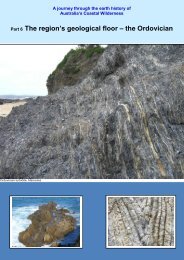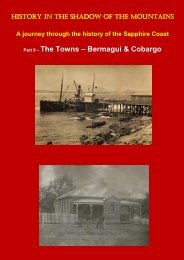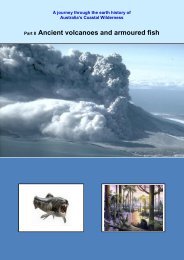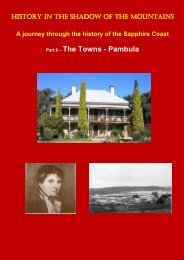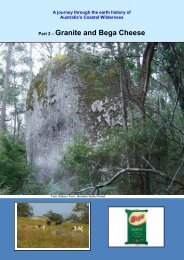9 The Coastal Sandstones - Sapphire Coast
9 The Coastal Sandstones - Sapphire Coast
9 The Coastal Sandstones - Sapphire Coast
You also want an ePaper? Increase the reach of your titles
YUMPU automatically turns print PDFs into web optimized ePapers that Google loves.
Typical aggradational environments include lowland alluvial rivers, river deltas andalluvial fans. Aggradational environments often undergo slow subsidence under theweight of the accumulating sediment which balances the increase in land surfaceelevation due to this aggradation.<strong>The</strong> timing of the deposition of these two sandstone formations is thought to be quitedifferent. <strong>The</strong>re are uncertainties about the age of the Quondolo Formation butstudies suggest it is Paleocene to Early Eocene, about 55–50 million years ago(Mya).Deposition of the Long Beach Formation is thought to have occurred during theOligocene to Early Miocene (23-30 Mya). This is in accord with the 31 million yeardate for the Coila Basalt, a volcanic flow that is sandwiched between two similarsandstone formations in the Tuross Head part of the region.Aggradation of the south coast mid-Tertiary sandstones is thought to be attributed toan increase in sea level rise during the Oligocene to Early Miocene rise resulting inthe development of coastal barriers of transported sediment at higher levels thantoday.<strong>The</strong> outcrops seen today are a remnant of the original extent of the sandstones. <strong>The</strong>diagram below matches up the contours of current outcrops and remnants that couldconservatively indicate the extent of the aggraded sediments which, in the formingbasins, consolidated into sandstone.




